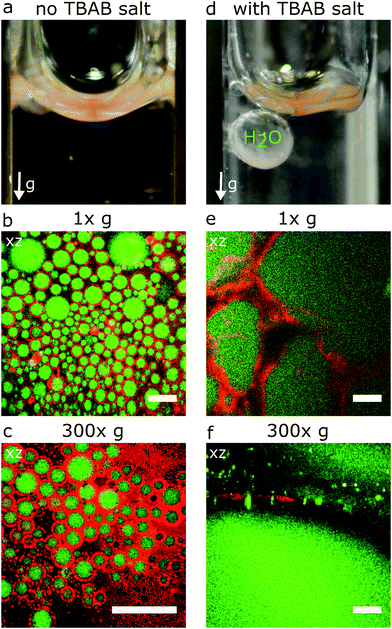

In the past 10 years a new application has emerged in the field of catalysis to use them as vehicles to carry out catalytic reactions, allowing a more environmentally friendly process with high conversions and selectivities and important advantages for catalyst recovery. In addition, the fraction of aqueous and oil phases resolved for three years is within 0.2 to 0.6 and ≪ 0.1, respectively, depending on NaCl concentration. Particle-stabilised or Pickering emulsions are versatile systems. Besides, salt ions can be applied to control the electrostatic. The utility of a Pickering emulsion (PEm) under saline conditions is strongly dependent on the stability of the emulsion in the presence of different salt. Meanwhile, ionic strength promoted the formation of aggregates of TWIPNs to increase the size of protein particles, which increased the aggregation of adjacent TWIPNs to improve the. The results also revealed that the aspect ratio of the anisotropic droplets is between 2.7 to 3.3, depending on NaCl concentration. FIGURE 2 FI of Pickering emulsions stabilized by tea water-insoluble protein. Besides, salt ions can be applied to control the electrostatic interactions between the droplets of Pickering emulsions and affect the formation of emulsion gels. They have been widely used in foods, cosmetics, and pharmaceutical products due to the encapsulating ability of the desired molecules in the dispersed phase. surfactant-free emulsions over wide ranges of salt concentration (0 500. 1 Introduction Emulsions are systems where a liquid phase is dispersed into another liquid phase. It was found that mixtures containing the cube-shaped CaCO 3 particles formed oil-in-water emulsions with anisotropic droplets (length ≤ 2430 μm) while those containing the rod-shaped ones formed emulsions with isotropic droplets (diameter ≤ 800 μm). in formulating stable oil in water Pickering emulsions was investigated and. The salt solution-particle-oil mixtures are then sheared at 13000 rpm for 3 min. This method involves measuring 7 cm 3 of different concentrations of aqueous NaCl solution (0 to 1000 mM) into separate screw cap glass vials, adding 4 wt.% rod- or cube-shaped CaCO 3 particles, followed by 7 cm 3 of vegetable oil. Herein, we report a facile method for preparing anisotropic Pickering emulsion droplets which does not require elevated temperatures, exotic particles and equipment. Pickering emulsions, with anisotropic droplets, are often prepared via methods that involve long procedures or require elevated temperatures, exotic particles and equipment, thereby limiting their industrial applications.


 0 kommentar(er)
0 kommentar(er)
